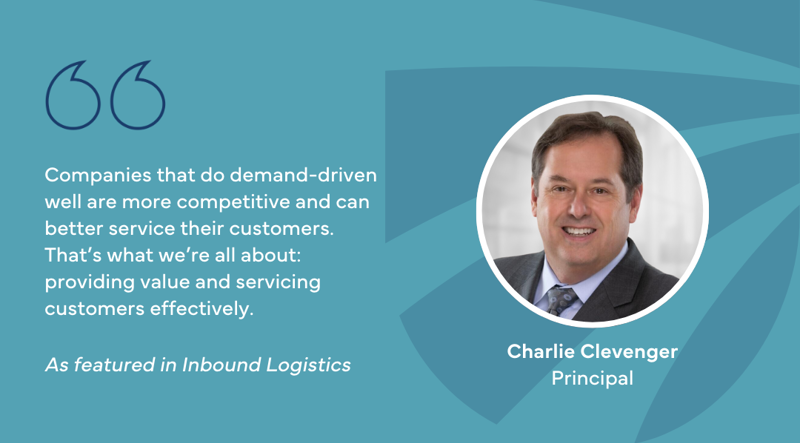Shifting your organization to a demand-driven supply chain can be an effective way to address fickle consumer demand and disruptions that have hampered supply chains. The effort to understand the capacity and capabilities of a supply chain is often a daunting initial task, but it allows organizations to sense, adapt, and respond to demand changes faster, capturing sales opportunities during demand surges.
For manufacturers, Principal Charles Clevenger suggested the first step is to engage suppliers and work with them to respond to demand fluctuations. Some suppliers may instead opt to “decouple” from their customers, and operate under their own set of conditions, he said. This may be a result of operational dissonance between the supplier and the customer.
The process for a supplier may operate better under standard, high-volume deliveries, but a customer may have a wide variety of products they order with fluctuating quantities. “The challenge becomes how do we harmonize that? How do we find a common ground that works for that manufacturer as a supplier and our supply chain and our customers?” Clevenger asked.
The short answer is establishing greater visibility and communication along the supply chain to create new flexibility. It leads to the second step, which relies on consolidating customer-centric data to then transmit relevant information and analytics to prepare the supply chain for shifts in demand. The result may include changes to the organizational structure to ensure reporting reaches the right areas.
The third step is to actually understand and adapt to consumer demand and preferences, Clevenger said. One example he mentioned came from his days in manufacturing: when providing development samples, non-automotive customers required much faster turnaround than automotive clients. “We had to learn to adapt and make that speed part of our operating system,” he said.
Even then, adjusting for every customer request may not be possible. For instance, Clevenger once oversaw an assembly line that served more than 100 customers, making constant adjustments impossible. Instead, his team consistently communicated with suppliers, sharing customer insights and their responsive actions. This allowed suppliers to align their responses as appropriate, he said.
Other best practices include creating contingency plans through agile procurement practices and diversified supplier networks, leveraging AI and machine learning to deliver forecasting and real-time market insights, and implementing a technology system to centralize reporting and data collection.
The search for a more efficient, cost-effective supply chain presents some stumbling blocks for organizations transitioning to being demand-driven. The payoff, though, promises major rewards. “Companies that do demand-driven well are more competitive and can better service their customers,” Clevenger said. “That’s what we’re all about: providing value and servicing customers effectively".
Read the full article published by Inbound Logistics.
Have a Question?
Fill out the form to speak with one of our professionals.







